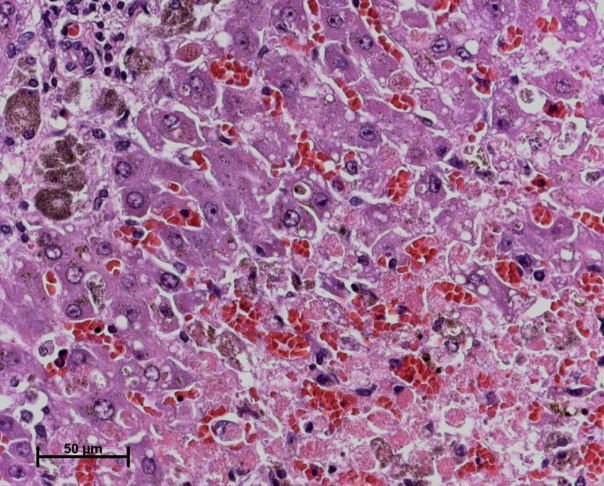Lec 16 - Copper (part 1)
1/27
Earn XP
Description and Tags
Hepatoxicity
Name | Mastery | Learn | Test | Matching | Spaced |
|---|
No study sessions yet.
28 Terms
You hear copper, you say _____!
SHEEP
Copper is an ____ trace element
essential
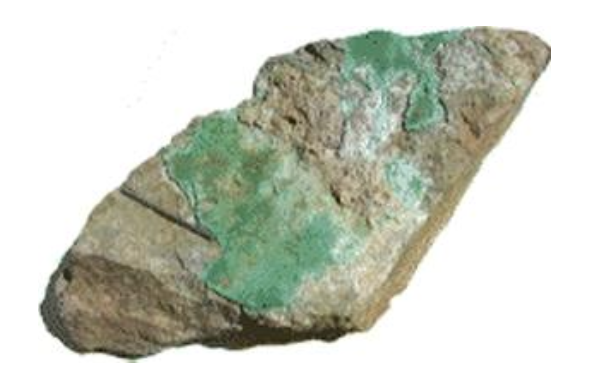
How do animals get exposed to copper?
commonly used a feed additive especially in PNW
Why is copper used as a feed additive?
co-factor in lots of enzymes in lots of systems/wide variety of Cu-deficient disease in cattle, sheep, goats
What are sources of copper toxicity in food animals?
dietary imbalances, feeding sensitive species feeds/mineral mixes designed for cattle, poultry, swine, mixing/math errors, liver dysfunction-biliary system
Copper in feed: Cattle has up to ___ppm, Poultry up to ___ppm, Swine up to ___ppm
1500, 1000, 250
Copper toxicity can also occur if ___ to ___ ratio is out of whack in diet
Copper, Molybdenum
A copper sensitive species, ___, will have a total diet of copper ___ ppm
sheep, <50
Give examples of primary vs secondary intoxication of copper
primary: mixing/math errors
secondary: liver dysfunction, biliary system
What are sources of copper toxicity in small animals and exotics? (excluding copper storage disease)
coins - pre 1982 coins copper (post 1982 coins zinc) NOT like zinc, given time will dissolve in acidic environment, or pass
others: liver dysfunction of biliary system
too much copper in canine diets?
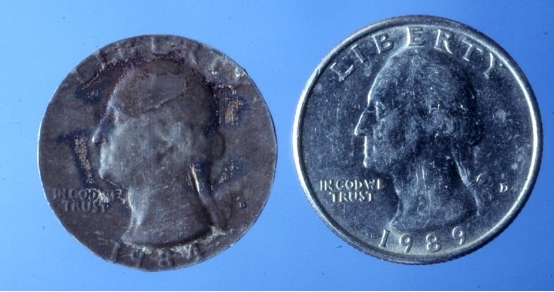
Is copper toxicity commonly acute or chronic exposures?
commonly chronic exposures but with abrupt signs
What species are susceptible? Which are most susceptible?
All susceptible, sheep most sensitive, then pre-ruminant calves, goats, llamas, alpacas
Copper toxicity is not common in what animals?
young, small companion animals-exotics
What elements will tie up copper?
Mo, S
Mo and S will ___ excessive copper ____ and enhance excretion in ___.
slow down, absorption, bile
Ratio of Cu:Mo that is greater than ___ could potentially be problematic chronically.
>6-10:1
True or False? All forms of copper toxicity will results in the same presentation.
False. Not all forms of copper are created equal
If a group of animals are presenting with toxicity think ____. If only a single animal is presenting with toxicity think ____.
primary, secondary
NEED to determine ___ of copper.
source
Describe the mechanism of action of copper. Storage? Metabolism? Excretion?
excess copper stored in liver, lysosomes and mitochondria, metabolizes if sufficient molybdenum and sulfate available and excreted mainly into bile as Cu-Mo-SO4 complex
The liver has a high copper storage capacity, but if storage capcity is reached, a ___ event can cause what?
stressful,
Cu released → hepatocellular necrosis → serum Cu → hemolysis
What is the end result of Cu release into serum?
acute hemolytic crisis
Why might you not see acute hemolytic crisis with copper toxicity?
with acute or peracute exposures and when dose is high, may just see hepatic and renal necrosis
Describe the clinical signs of copper toxicity in LA
abrupt onset but sporadic occurrence in groups
weakness, abdominal pain, off feed, grinding teeth, lethargy, icterus, brown/red urine, nonspecific production losses prior to onset of severe signs
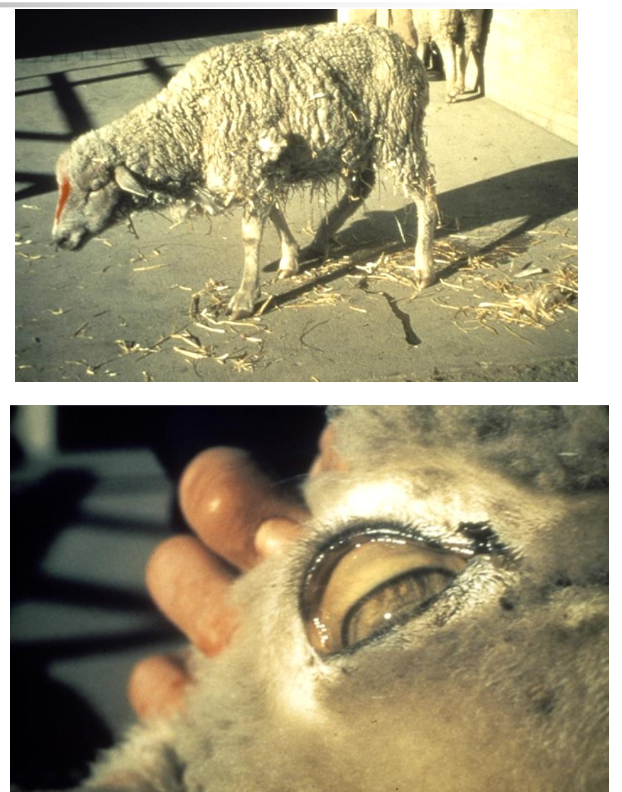
Describe the clinical signs of copper toxicity in SA
repeated bouts of hepatitis (chronic) - vomiting, abdominal pain, diarrhea, loss of appetite
acute NOT common and not common to see acute hepatic necrosis/hemolysis
What lab abnormalities would you see with copper toxicity?
elevated liver enzymes: GGT, AST
anemia due to hemolysis
hemoglobinemia/uria, hyperbilirubinemia/uria
methemoglobinemia (brown blood)
UA changes hypoxia and hemoglobin related (casts, glucose, bilirubin, hemoglobin, azotemia etc)
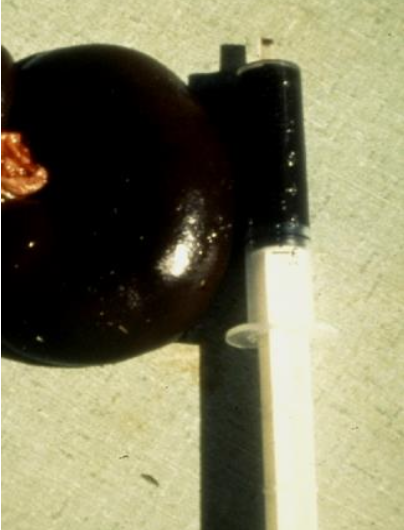
Describe the gross lesions of copper toxicity
icterus
enlarged, discolored kidneys
enlarged, friable, tan liver
enlarged, engorged spleen,
distended gallbladder
gastroenteritis if acute
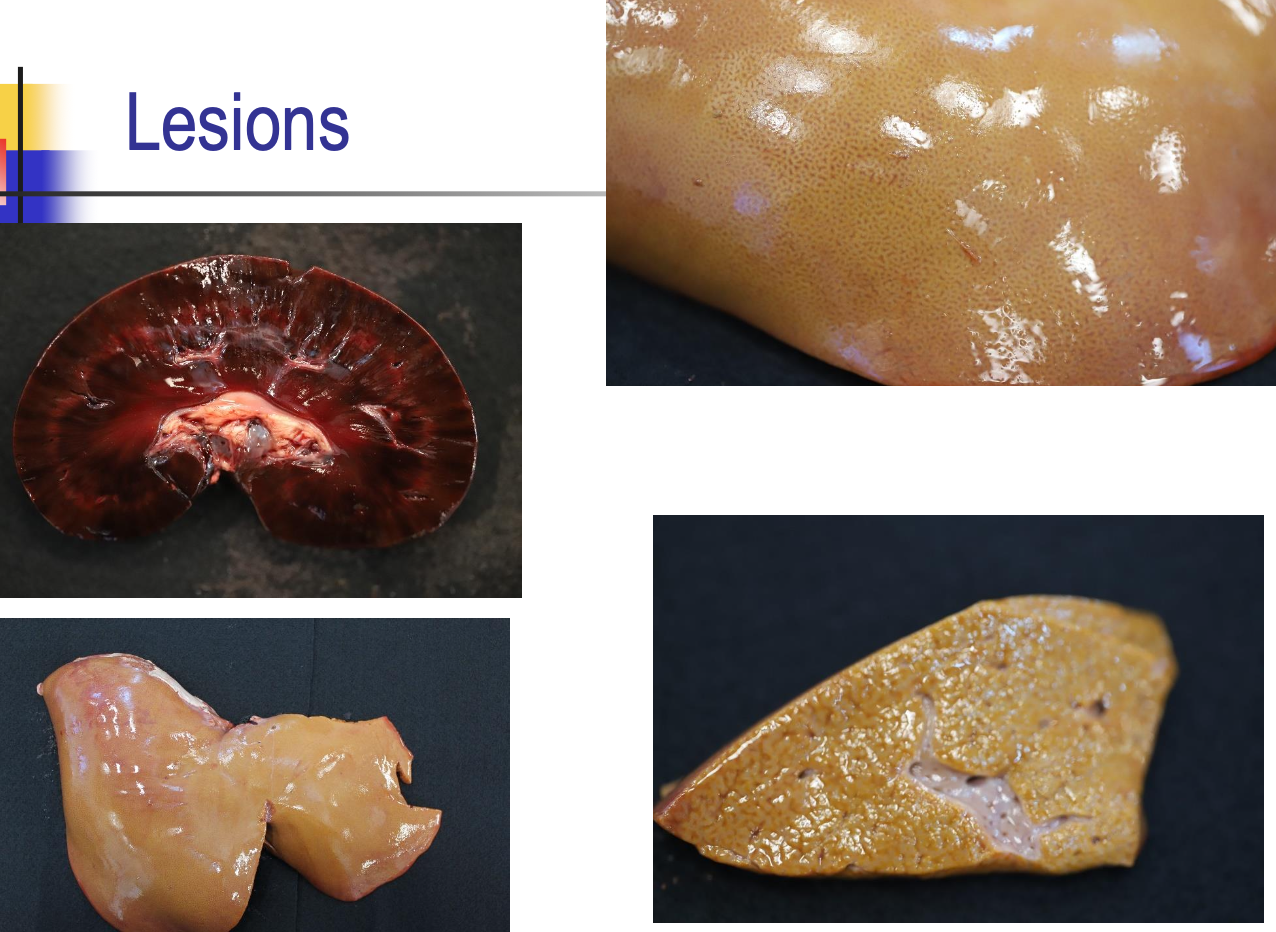
Describe the histopathologic lesions of copper toxicity
hepatic necrosis, varying patterns, granular gray-green pigement within Kupffer cells
acute renal tubule degeneration and necrosis with hemoglobin casts (due to hypoxia or hemoglobin)
gastroenteritis if acute
